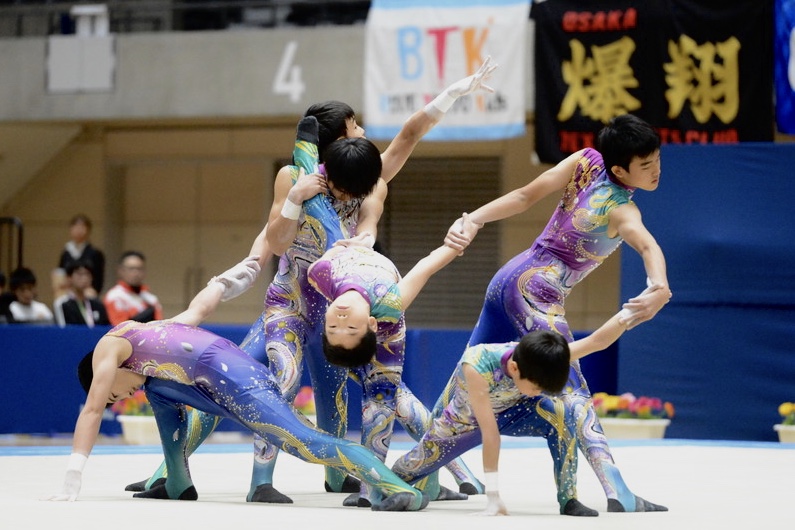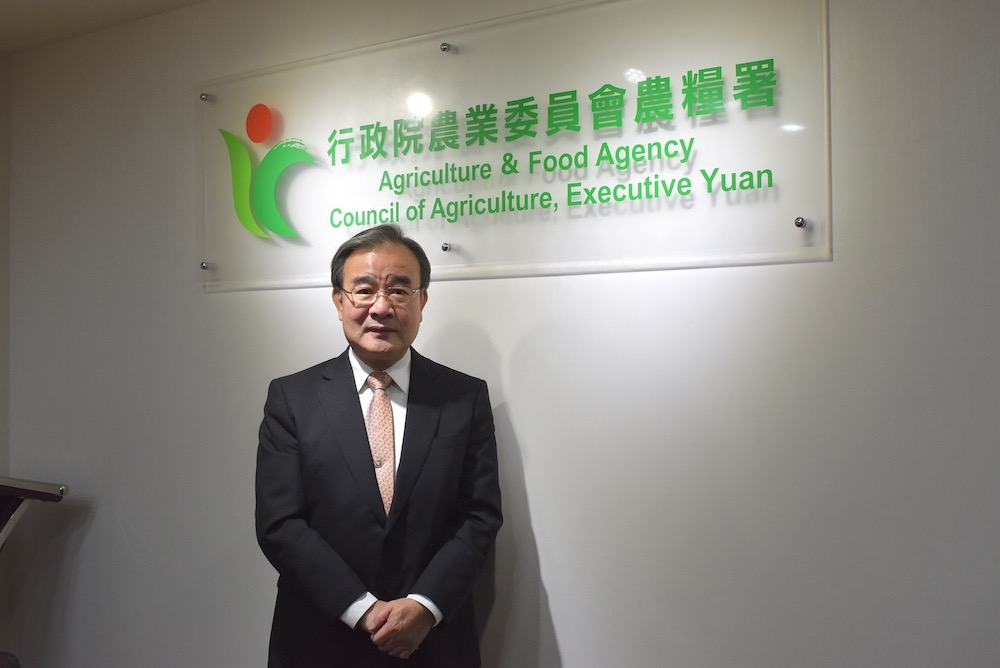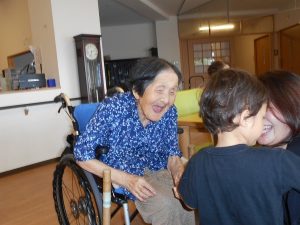The COVID-19 Crisis has shaken up the way we work. What will the consequences be?
In December 2019, the Japanese government’s SDGS Promotion Headquarters released its “SDGs Action Plan for 2020,” with a commitment to accelerate innovation in business, regional revitalization and the empowerment of women in particular. The COVID-19 pandemic might have hampered progress towards achieving the SDGs, yet by reaffirming their commitment to these goals in this last crucial decade, governments around the world can ensure that no one is left behind in the recovery process.
In Japan it is thought that some 87% of mothers hope to return to work again after childbirth. * Yet there are significant obstacles, from time constraints and availability of childcare to the receptiveness of employers and partners.
In this two-part interview, we speak to Tomoyuki Mita, Director at Akashia Okawa, a private nursing home in Hiroshima, on how he has successfully tapped into this neglected and undervalued resource in the Japanese economy to improve the sustainability of his business and the quality of elderly care.
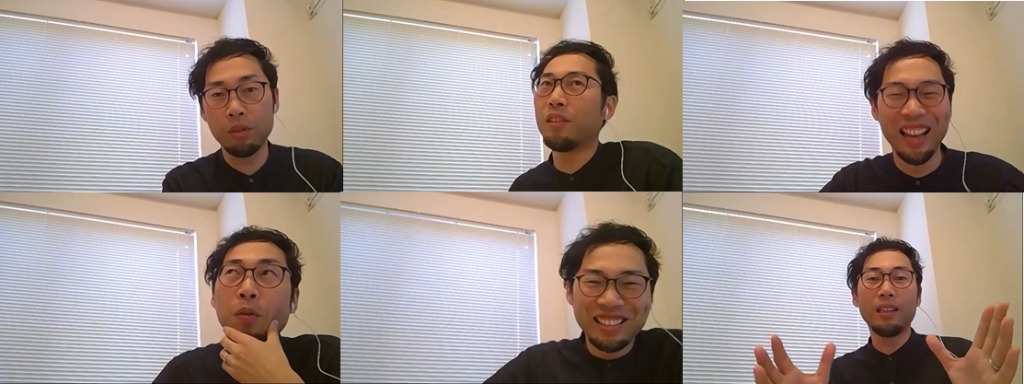
Tomoyuki Mita, Director at Akashia Okawa, joins SDGs Japan Portal over Zoom
SDGS Portal Site Editorial Team: The elderly care sector is one that above all supports people. What is your approach at Akashia Okawa?
Tomoyuki Mita: We have thought a lot about what care providers can do to advance the SDG to “ensure healthy lives and wellbeing for all,” and our answer to that is:
- We support residents in going about their lives in the same way as before.
- Residents don’t come to the facility to be institutionalised; instead they are equipped with the tools to overcome the barriers that existed in their lives and adapt.
- We do whatever possible to prevent the worsening of someone’s condition that is on the threshold between a healthy one and one that requires care.
I think it is important to maintain these principles.
For us, a care facility is not just a place to support the elderly but one that helps them to continue their normal way of life. With the declining population and ageing society, care homes are not special anymore, they are practically infrastructure, and so we have to keep them going.
As you know, procuring funding and human resources in this business is difficult. Our generation probably won’t see much change once we are elderly, but thinking about the next generation or the one after that…how are we going to ensure a smooth transition? I think it is the mission of this generation to start finding innovative solutions, and to address the problem of scarce human resources. A “work revolution” comes to mind.
The waiting lists for children’s nurseries issue is a hot topic, but what about those mothers who want to work yet cannot? In our sector, career progression is highly dependent on experience, and when an employee leaves to have a baby for example, there is a considerably high barrier to re-entry. If this barrier can be lowered, this will not only help mothers back into work (who want to work) but also alleviate the persistent labour shortage. This is how we can make this business sustainable. So we implemented a work revolution of our own at Akashia Okawa.
I’m always occupied with HR and I had given a lot of thought to the hiring of women around the time that the word “ikumen” [a term to refer to fathers who take time off work to help raising their children] came into fashion. When fathers do take time off it is usually a relatively short, defined period of time, whereas the time taken off by mothers by comparison becomes protracted and leads to unemployment in many cases. I’m sure many mothers feel they can no longer work even if they wanted to.
SDGs Portal Site: Certainly, looking at the data, working conditions and hours, and childcare are considerable hurdles to those who want to return to the world of work.
Mita: Mothers with very young children have few options but to stay at home if they cannot place them in childcare. So we thought, let’s allow our employees with kids of pre-school age, up to three years old, to bring them to work in back carriers, in what we called the “Working Mother Project.”
SDGs Portal Site: What were some of the key goals and observations?
Mita: We removed any tension or divide between existing and returning staff. Mums who are returning to work after a long time away have a period of adjustment in which they’re quite anxious and thinking “Am I doing the right thing?” But on top of that there are the perceptions that existing staff members might have of returning staff. On the one hand they might regard returning staff positively for contributing when there is a staff shortage, but on the other hand, there might be some rather negative perceptions of returning staff being able to start at the same level as them even though they have longer, uninterrupted experience.
We wondered about what we could do to create a positive working environment for existing and returning staff and reduce tension between the two. As a solution we established a new probation period for returning staff as “Nursing Supporters.”
In the elderly care sector there are rules that stipulate the minimum numbers of staff assigned to one resident. At Akashia we do not include our Nursing Supporters in this quota, which leads to increased labor costs as we have to hire new people from outside. But we are doing this nonetheless because becoming a sustainable business longer term won’t be possible if we get caught up in these immediate cost issues.
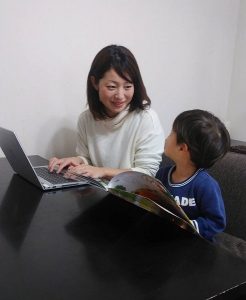
Some employees at Akashia Okawa with parenting responsibilities are able to undertake administrative tasks at home
SDGs Portal Site: How about after the children reach kindergarten age?
Mita: Even at this stage we expect working mums to have certain time constraints, with the need to take off Saturday and Sunday afternoons from 3pm for example. This makes it difficult to move out of the Nursing Supporter role, but I didn’t want to dismiss this possibility completely. Parenting is the number one priority in a family, and I wanted to create opportunities while respecting this. So in April 2019 we began a “work at home” program.
SDGs Portal Site: Did I hear you right? “Work at home”? How is that even possible?
Mita: It’s perfectly reasonable to be surprised; nursing care has a strong on-site, hands-on image. And 70-80% of this work is just that. But the remaining 20-30% is administrative work, such as record-keeping and event planning, and until then on-site staff were having to take time out-of-hours to complete it. We simply had to reform the system away from reliance on our hard-working staff to do overtime, and with that, we started a model whereby our working mums would take these tasks home with them. Specifically, we send reports to 70 families every month with letters and photographs, which our staff can do between their childcare and housework.
With this model we were able to both create jobs and pay salaries to mothers who would not otherwise have been able to work, as well as allow our on-site staff to fully dedicate themselves to residents, leading to an improved quality of service.
SDGs Portal Site: One year on, what is the “work at home” situation like now?
Mita: Those staff working from home were promoted to counselors.
Due to the pandemic, we have been conducting our interviews over Zoom, and teleworking is becoming the norm.
*Statistics by HR company En-Japan Co. Ltd
This is the first instalment of a two-part article. See Part Two here.
This article was adapted from the original Japanese: https://japan-sdgs.or.jp/news/443.html https://japan-sdgs.or.jp/news/445.html









